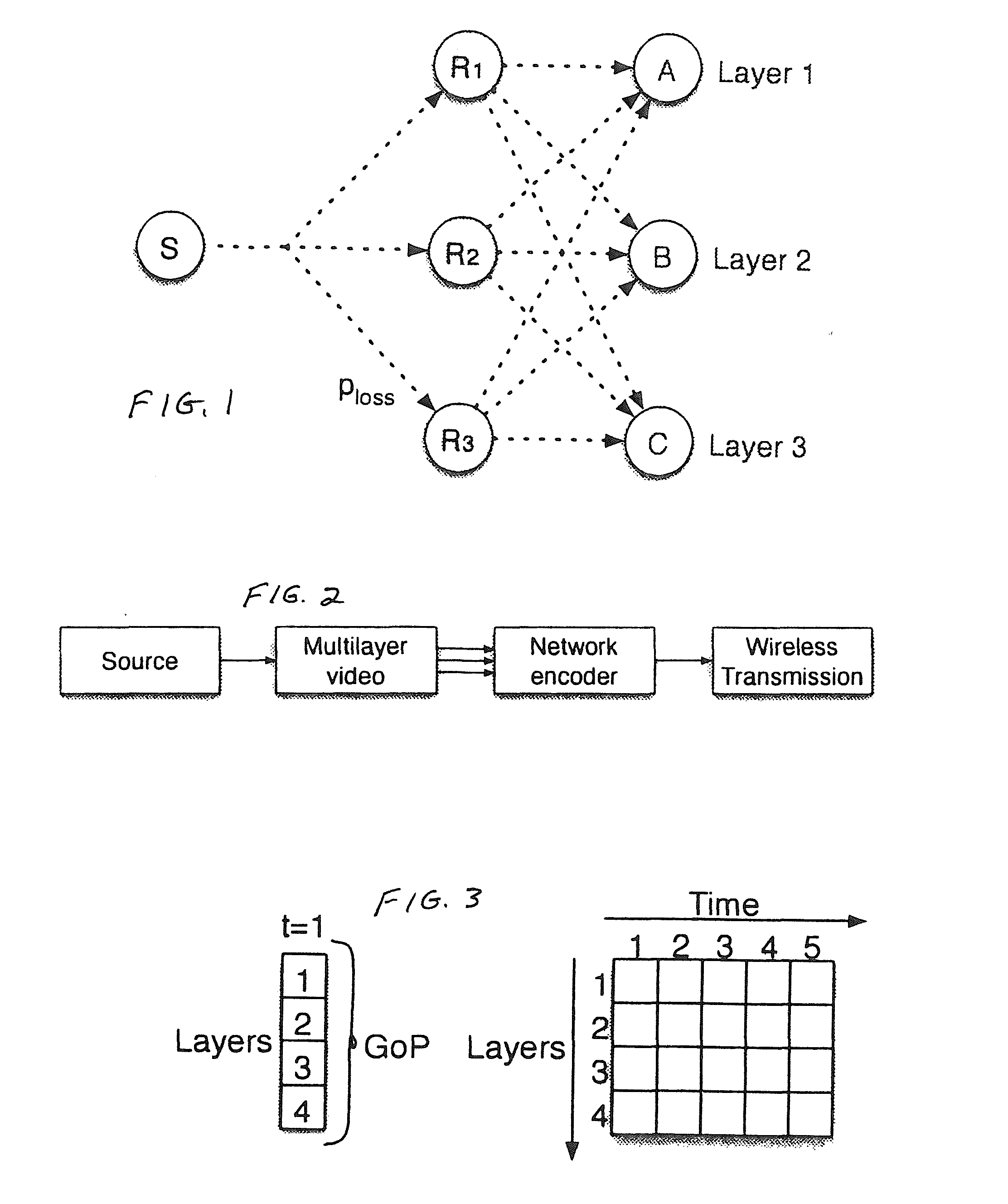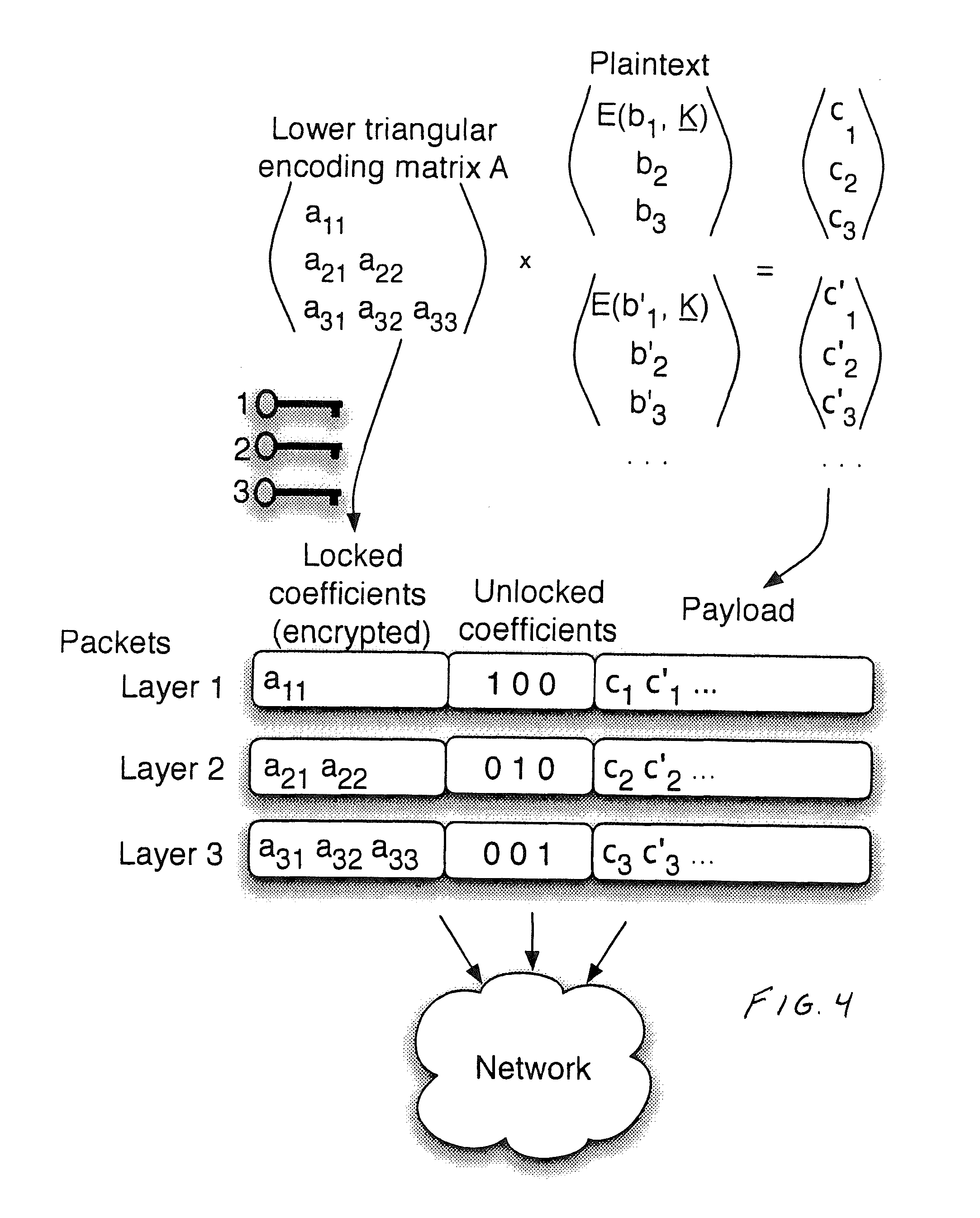Secure network coding for multi-resolution wireless video streaming
a wireless video and wireless network technology, applied in the field of network coding schemes, can solve the problems of loss of packets transmitted by nodes, poor channel quality, and open task of providing video streaming of variable quality to heterogeneous set of receivers with different subscription levels, so as to achieve network coding and increase throughput. robustness, the effect of improving the quality of video streaming
- Summary
- Abstract
- Description
- Claims
- Application Information
AI Technical Summary
Benefits of technology
Problems solved by technology
Method used
Image
Examples
Embodiment Construction
[0053]Referring now to FIG. 1, a source or server node S streams video to three sink or receiver nodes A, B and C (or more simply “sinks” or “receivers”) through relay nodes R1, R2 and R3 in a wireless setting. The probability of dropping a packet in each link (in dashed) is denoted as Ploss. The sinks A, B, C subscribed for different video quality, thus one must devise mechanisms to ensure reliable delivery over the wireless medium, and protection against unauthorized access. The operation of source node S is described in detail below (and particularly in conjunction with FIG. 4 below).
[0054]Referring now to FIG. 2, a source node S generates multilayer video and provides the multilayer video to a network encoder. Network encoder encodes the video (i.e. the video is fed to the network encoder) and is subsequently transmitted through a wireless network having relay nodes R1, R2, R3 (e.g. as shown in FIG. 1) to one or more destination or receiving nodes (e.g. nodes A, B, C as shown in...
PUM
 Login to View More
Login to View More Abstract
Description
Claims
Application Information
 Login to View More
Login to View More - R&D
- Intellectual Property
- Life Sciences
- Materials
- Tech Scout
- Unparalleled Data Quality
- Higher Quality Content
- 60% Fewer Hallucinations
Browse by: Latest US Patents, China's latest patents, Technical Efficacy Thesaurus, Application Domain, Technology Topic, Popular Technical Reports.
© 2025 PatSnap. All rights reserved.Legal|Privacy policy|Modern Slavery Act Transparency Statement|Sitemap|About US| Contact US: help@patsnap.com



